Are you tired of constantly replacing scratched or shattered glasses? Discover how poly carbonate lenses offer unmatched durability, lightweight comfort, and superior UV protection, making them the ultimate choice for active lifestyles and everyday wear. Whether you’re an athlete, a parent, or simply seeking robust eyewear for daily needs, including stylish options for men with reading glasses, this material provides unparalleled eye protection and clarity. This guide dives deep into the benefits, comparing them to other materials, and offering expert advice on care, ensuring you make an informed decision for long-lasting, clear vision.
The Unbreakable Core: Understanding Polycarbonate Lenses
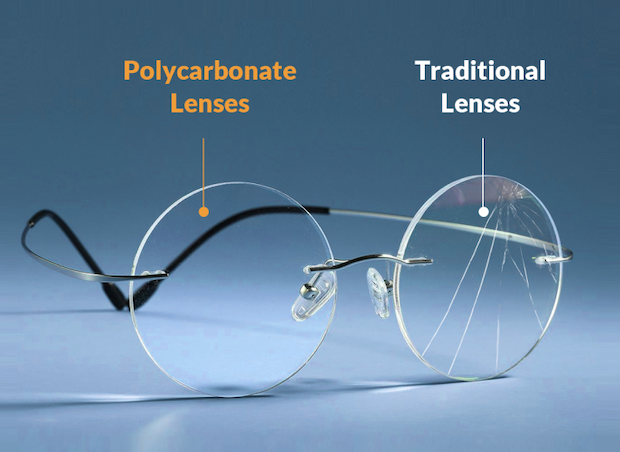
For anyone seeking robust and reliable vision correction, polycarbonate lenses have become a benchmark in the eyewear industry. These durable optical components offer a unique combination of strength, clarity, and safety, making them a preferred choice for a wide range of wearers, from active individuals to children. Understanding what sets this material apart is crucial for making informed decisions about your next pair of spectacles.
What Sets Polycarbonate Apart?
Polycarbonate eyewear stands out due to its distinct properties and the innovative process by which it’s created. Unlike traditional glass or standard plastic (CR-39) lenses, polycarbonate offers superior performance in several key areas, directly addressing common concerns like lens breakage and weight.
Composition and Manufacturing of Polycarbonate Lenses
The magic of polycarbonate lies in its unique chemical structure and manufacturing process. It is a specific type of thermoplastic polymer, meaning it can be repeatedly heated and molded without significant degradation. The primary raw material is a thermoplastic called bisphenol A (BPA), which is then reacted to form a strong, transparent plastic.
The production of polycarbonate lenses involves an injection molding process. Molten polycarbonate material is injected into optical molds at high pressure, then rapidly cooled. This method allows for precise curvature and thickness, resulting in a lightweight yet incredibly strong lens. This inherent molecular structure and the rapid molding process contribute directly to the material’s exceptional impact resistance, making it virtually shatterproof under normal conditions. This advanced manufacturing technique ensures consistent quality and durability for every polycarbonate spectacle lens.
Key Advantages Over Traditional Lens Materials
When evaluating polycarbonate lenses against older materials like glass or conventional plastic, their benefits become remarkably clear. These advantages directly address the search intent for safer, lighter, and more protective eyewear.
- Superior Impact Resistance: This is the hallmark feature of
polycarbonate. It is approximately 10 times more impact-resistant than standard plastic or glass lenses. This makes it an ideal choice for sports eyewear, safety glasses, and children’s glasses, significantly reducing the risk of eye injury from impacts. For those leading an active lifestyle or requiring extra protection,polycarbonateoffers unparalleledeye safety. - Exceptional Thinness:
Polycarbonatehas a higher refractive index (typically around 1.59) compared to standard CR-39 plastic (1.50). This means it can bend light more efficiently, allowing for thinner and flatter lenses, especially beneficial for individuals with stronger prescriptions. Thinner lenses not only look more aesthetically pleasing but also reduce distortion at the edges. - Lightweight Comfort: Despite their incredible strength,
polycarbonate lensesare remarkably light. They are up to 20% lighter than CR-39 plastic lenses and considerably lighter than glass. This reduction in weight significantly enhances comfort, preventing the common issue of eyeglasses sliding down the nose or causing pressure points, making them perfect for all-day wear. - Built-in UV Protection: A significant benefit often overlooked is
polycarbonate'sinherent ability to block 100% of the sun’s harmful UVA and UVB rays, up to 380 nanometers. This provides critical long-term protection for your eyes against cataracts, macular degeneration, and other sun-related eye conditions, eliminating the need for an additional UV coating.
Polycarbonate vs. Other Advanced Lens Materials
While polycarbonate offers significant advantages, the optical market continually innovates. Understanding how polycarbonate compares to other modern advanced lens materials like Trivex and high-index lenses is essential for selecting the perfect vision correction solution tailored to your specific needs and prescription.
Polycarbonate vs. Trivex Lenses
Both polycarbonate and Trivex lenses are celebrated for their exceptional impact resistance and lightweight properties. Introduced in 2001, Trivex was developed as an alternative to polycarbonate, specifically aiming to address some of its optical limitations.
- Impact Resistance: Both materials are incredibly strong and meet the FDA’s impact resistance standards. While
polycarbonatehas a slightly higher impact strength in direct, extreme tests, Trivex is also highly shatter-resistant and is often considered equally safe for most daily activities and even safety eyewear. - Optical Clarity (Abbe Value): This is where Trivex often gets the edge. Trivex typically has an Abbe value of around 43-45, whereas
polycarbonateis around 30-32. A higher Abbe value indicates less chromatic aberration (color fringing or rainbow effects around objects), especially noticeable around bright lights or when looking through the periphery of the lens. For individuals highly sensitive to optical distortions, Trivex might offer a marginally clearer field of vision. - Weight: Trivex is slightly lighter than
polycarbonate. Its specific gravity is around 1.11 g/cm³, compared topolycarbonate's1.20 g/cm³. While this difference is minimal, it contributes to Trivex being one of the lightest lens materials available. - Thickness:
Polycarbonate(refractive index 1.59) is marginally thinner for the same prescription than Trivex (refractive index 1.53), especially at higher powers. However, for most prescriptions, the difference is often negligible.
Polycarbonate vs. High-Index Lenses
High-index lenses are a category of lens materials designed specifically to be thinner and lighter than conventional plastic for strong prescriptions. They achieve this by having a higher refractive index than polycarbonate.
- Thinness: This is the primary advantage of
high-index lenses. With refractive indexes ranging from 1.60 to 1.74, they can be significantly thinner thanpolycarbonate lenses, especially for prescriptions above +/- 4.00 diopters. The higher the index, the thinner the lens. For very strong prescriptions,high-index materialsare often the only way to achieve an aesthetically pleasing and comfortable eyewear profile. - Weight: While thinner,
high-index lensescan sometimes be heavier thanpolycarbonateat higher prescriptions due to the increased density of the material, especially with indexes like 1.70 or 1.74. However, modern manufacturing techniques are constantly improving this. - Impact Resistance:
Polycarbonategenerally outperformshigh-index materialsin terms of impact resistance. While manyhigh-index lensesoffer good durability, they are typically not as shatter-resistant aspolycarbonateor Trivex. For individuals needing extreme impact protection,polycarbonateremains the superior choice. - UV Protection: Most
high-index lensesalso offer 100% UV protection, similar topolycarbonate. - Cost:
High-index lensesare often more expensive thanpolycarbonatedue to their advanced materials and complex manufacturing processes.
When choosing between these optical materials, consider your prescription strength, lifestyle, and aesthetic preferences. If you prioritize extreme impact resistance and integrated UV protection in a lightweight package, polycarbonate is an excellent all-around performer. For those with very strong prescriptions seeking the thinnest possible lens, high-index materials are likely your best option, provided impact resistance is not your absolute top priority. The choice of spectacle frames for male or female users also impacts lens selection, as certain frame types like rimless or semi-rimless benefit greatly from durable lens materials like polycarbonate or Trivex. For more insights on how lens choice integrates with different frame styles, particularly for men, explore our comprehensive guide on choosing the perfect spectacle frames for male.
If you’re ready to experience the unmatched durability and clarity of this advanced material, you can explore a wide selection of poly carbonate lenses designed for every need. By clicking here, you’ll find various impact-resistant lens options that provide superior eye protection and comfort, ensuring your next pair of glasses meets the highest standards of safety and performance: poly carbonate lenses.
Unlocking Superior Performance: Benefits of Polycarbonate Lenses
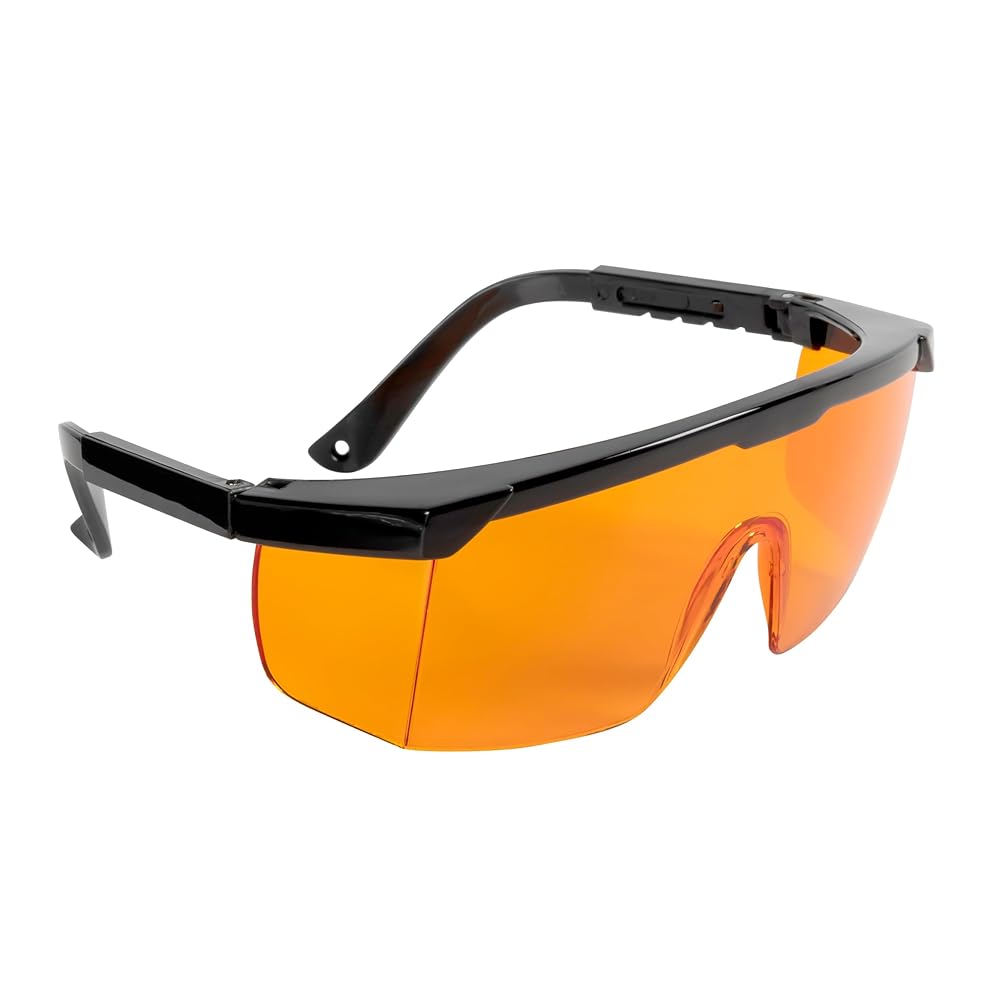
Choosing the right lens material is pivotal for both vision correction and overall eye health. Polycarbonate lenses consistently deliver a compelling array of advantages, making them a top-tier choice for a diverse range of wearers in 2025. Their inherent characteristics translate directly into enhanced safety, long-term protection, and superior comfort for everyday use.
Unparalleled Durability and Safety
The robust nature of polycarbonate is its defining characteristic, offering peace of mind through significantly enhanced safety for your eyes. This material excels where traditional lenses falter, providing a protective barrier against unexpected impacts.
Shatterproof Eyewear for Active Lifestyles
For individuals with dynamic lives, shatterproof eyewear is not just a luxury but a necessity. Polycarbonate lenses are approximately 10 times more impact-resistant than standard plastic or glass, making them virtually indestructible under typical conditions. This remarkable durability is particularly beneficial for children, whose active play often leads to accidental drops or impacts. Parents can rest assured that their child’s polycarbonate spectacles offer a high degree of eye protection, significantly reducing the risk of lens breakage and potential eye injury. Even for adults, daily activities, from gardening to DIY projects, present unforeseen risks, where impact-resistant lenses can provide crucial safety.
Enhanced Impact Resistance for Sports
When it comes to athletic pursuits, enhanced impact resistance for sports is non-negotiable. Polycarbonate is the material of choice for most sports eyewear and safety glasses, meeting stringent safety standards set by organizations like the American National Standards Institute (ANSI Z87.1 for safety eyewear). Whether playing basketball, cycling, or participating in contact sports, polycarbonate lenses absorb and dissipate kinetic energy from impacts without shattering, protecting the wearer’s eyes from flying objects, balls, or accidental blows. This superior impact protection allows athletes to focus on their performance, confident in the integrity of their vision correction solution.
Comprehensive UV Protection
Beyond their physical toughness, polycarbonate lenses offer a critical, often underestimated, health benefit: comprehensive UV protection. This intrinsic feature safeguards your eyes from the detrimental effects of solar radiation.
Blocking 100% UVA/UVB Rays (UV Protection Glasses)
A significant advantage of polycarbonate is its inherent ability to block 100% of the sun’s harmful UVA and UVB rays, up to 380 nanometers. This means that every pair of polycarbonate glasses effectively functions as UV protection glasses, without the need for additional coatings. Prolonged exposure to ultraviolet radiation can contribute to serious eye conditions over time, including cataracts, macular degeneration, and even certain types of eye cancers. By choosing polycarbonate eyewear, you are investing in crucial long-term eye health, ensuring your eyes are shielded from the invisible, damaging spectrum of sunlight.
UV400 Protection: A Standard of Excellence
When you see “UV400 protection” advertised, it signifies a standard of excellence in UV blocking. This rating indicates that the lenses block all light rays with wavelengths up to 400 nanometers, encompassing both UVA and UVB rays. Polycarbonate lenses naturally meet or exceed this UV400 standard, providing a superior level of solar protection that goes beyond the basic requirements. This makes polycarbonate an outstanding choice for everyday wear, sunglasses, and even clear prescription glasses, ensuring your visual health is prioritized against environmental aggressors.
Lightweight Comfort and Optical Clarity
The marriage of strength with lightness makes polycarbonate lenses exceptionally comfortable, while their optical properties ensure clear and reliable vision for the wearer.
Enhanced Wearability: Lightweight Sunglasses for All-Day Use
Despite their incredible strength, polycarbonate lenses are remarkably light. They are up to 20% lighter than traditional plastic (CR-39) lenses and considerably lighter than glass. This reduction in weight dramatically contributes to enhanced wearability, preventing issues like glasses sliding down the nose, pressure points on the bridge, or discomfort behind the ears. This lightweight comfort makes polycarbonate ideal for all-day use, whether you’re at work, enjoying outdoor activities, or simply relaxing. It’s particularly appreciated in lightweight sunglasses where a heavy frame can quickly become cumbersome. Selecting the right frame also plays a significant role in overall comfort. If you are exploring options for lightweight frames to complement your polycarbonate lenses, you might also be interested in how to score unbeatable deals on cheap eyeglass frames to complete your comfortable and budget-friendly eyewear solution.
Minimizing Distortion with Optical Clarity
While other materials like Trivex boast slightly higher Abbe values (indicating less chromatic aberration), polycarbonate lenses still offer excellent optical clarity for the vast majority of wearers. Their higher refractive index (typically 1.59) allows for significantly thinner and flatter lens profiles, especially beneficial for individuals with stronger prescriptions. This thinner design inherently helps in minimizing distortion at the edges of the lens, providing a wider, clearer field of view compared to thicker, lower-index alternatives. Modern polycarbonate lens designs often incorporate advanced aspheric surfaces to further reduce peripheral distortion, ensuring crisp, clear vision across the entire lens surface. This combination of lightness and visual precision makes polycarbonate an intelligent choice for everyday vision correction.
If you’re seeking eyewear solutions that prioritize safety, UV protection, and lightweight comfort without compromising on optical clarity, polycarbonate lenses are an exceptional choice. Explore a diverse range of polycarbonate options, including various coatings and designs, to find the perfect pair that meets your specific lifestyle and visual needs. Clicking here will take you to a comprehensive selection of poly carbonate lenses that embody these benefits, ensuring you find impact-resistant eyewear built for performance and durability: poly carbonate lenses.
Engineered for Action: Polycarbonate Lenses in Sports and Cycling Eyewear
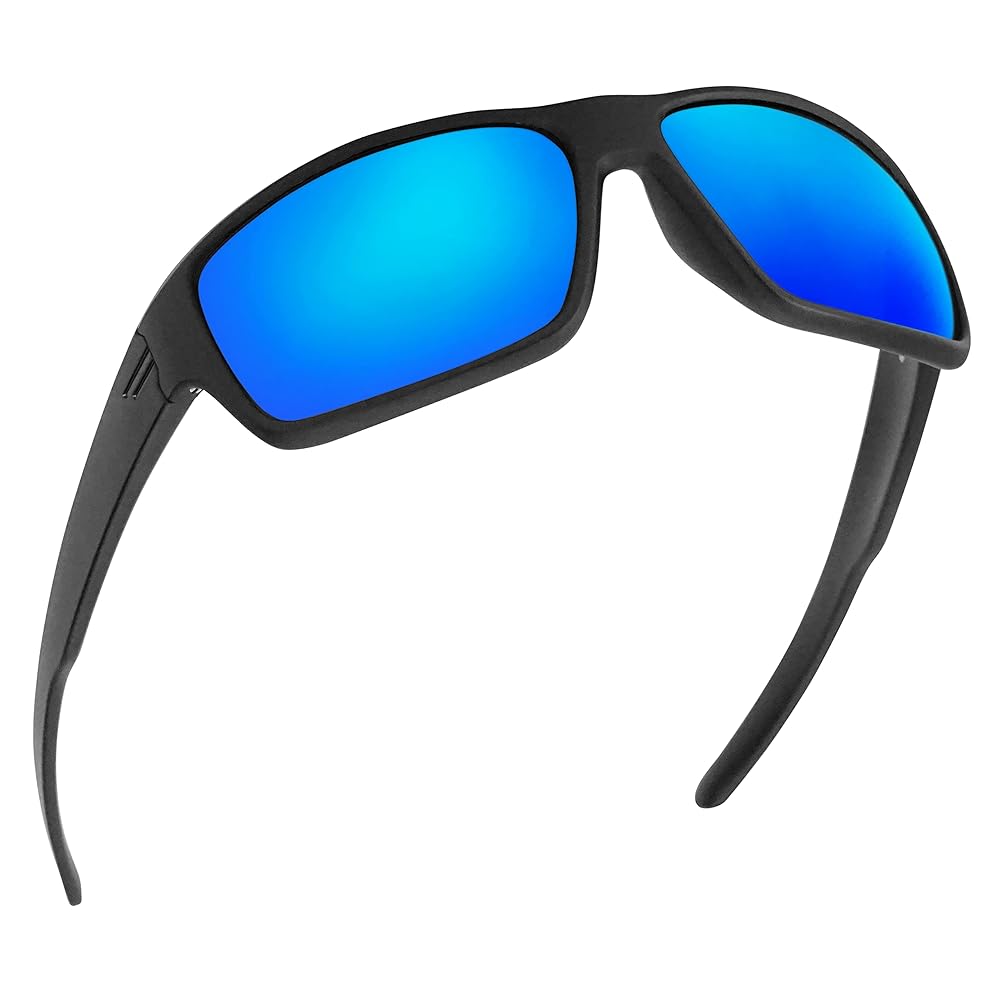
The demands of athletic performance require eyewear that goes beyond standard vision correction. Athletes, from professional cyclists to weekend warriors, need lenses that can withstand intense activity, protect against hazards, and enhance visual clarity in dynamic environments. In 2025, polycarbonate lenses continue to be the benchmark material, specifically engineered for the rigors of sports and outdoor activities. Their unique composition provides an unparalleled combination of safety, durability, and optical precision critical for competitive advantage and personal well-being.
Why Polycarbonate is Ideal for Athletes
For any athlete, the choice of eyewear is paramount for both performance and protection. Polycarbonate stands out as the superior lens material due to its intrinsic properties that directly address the specific challenges faced in sports. Its impact resistance and lightweight design make it an essential component of athletic eyewear, ensuring that vision is clear and eyes are safe.
Are Polycarbonate Lenses Good for Cycling?
Absolutely. Polycarbonate lenses are exceptionally good for cycling, making them the preferred choice for cyclists of all levels. The open-air nature of cycling exposes riders to a myriad of potential hazards: flying debris, insects, dust, and unforeseen impacts from falls. Given their shatterproof quality, polycarbonate cycling glasses provide an indispensable protective barrier.
Moreover, the lightweight nature of polycarbonate significantly reduces pressure points, enhancing comfort during long rides, a crucial factor for endurance. Their inherent UV protection also shields the eyes from prolonged sun exposure, which is vital when spending hours outdoors on the road or trail. This combination of durability, lightness, and UV blocking makes polycarbonate an intelligent choice for any cyclist prioritizing safety and performance.
Polycarbonate Lenses for Sports Performance
Beyond cycling, polycarbonate lenses excel across a broad spectrum of sports, enhancing athletic performance and safety. In high-impact sports like basketball or baseball, where balls or equipment can pose a direct threat, polycarbonate offers superior impact protection, safeguarding against serious eye injuries. For outdoor sports such as running, golf, or hiking, the complete UV protection inherent in polycarbonate prevents sun damage, ensuring long-term eye health.
The material’s optical clarity and ability to be crafted into thinner, lighter lenses contribute to a wider field of view and reduced visual distortion, which is essential for quick reactions and precise movements. When considering comprehensive eyewear solutions, it’s not just the lenses but also the frames that define performance and style. Many athletes, while prioritizing function, also appreciate the aesthetics and comfort provided by high-quality frames. Exploring options like mens designer spectacle frames can offer insights into durable yet stylish choices that complement the robust nature of polycarbonate lenses, ensuring your eyewear meets both your performance and aesthetic needs.
Advanced Features in Sport-Specific Designs
While the core properties of polycarbonate are foundational, modern sports eyewear leverages this material with advanced features to adapt to diverse athletic needs and environmental conditions. These innovations further solidify polycarbonate's position as the material of choice for dedicated athletes.
Interchangeable Lenses for Diverse Conditions
One of the most practical advancements in sport-specific eyewear designs is the integration of interchangeable lenses. This feature, often found in high-performance polycarbonate sports glasses, allows athletes to quickly swap out different lens tints and coatings to suit varying light conditions or activities. For instance, a cyclist might use a clear polycarbonate lens for night riding, a yellow tint for low-light or foggy conditions, and a dark, polarized lens for bright, sunny days.
This versatility ensures optimal visual clarity and glare reduction in any environment, maximizing athletic readiness without needing multiple pairs of glasses. The durability of polycarbonate also means these lenses can withstand frequent handling and insertion without damage.
Photochromatic Lenses: Adaptability on the Go
For athletes seeking ultimate convenience, photochromatic polycarbonate lenses offer a seamless solution. These adaptive lenses, sometimes referred to as transition lenses or light-adaptive lenses, automatically adjust their tint level based on exposure to UV light. This means a single pair of polycarbonate sunglasses can transition from clear indoors or in low light to a dark tint in bright sunlight, eliminating the need to carry multiple pairs or manually change lenses.
This on-the-go adaptability is particularly beneficial for trail runners who move between shaded forests and open clearings, or for golfers who experience fluctuating cloud cover. They provide continuous UV protection and optimal visual comfort regardless of changing light conditions, making polycarbonate photochromatic lenses a smart investment for versatile outdoor performance.
Anti-Fogging Solutions (Polycarbonate Lenses Fogging Prevention)
A common frustration for athletes is lens fogging, which can obscure vision and compromise safety, especially during intense exertion or in humid conditions. To combat polycarbonate lenses fogging, manufacturers employ various anti-fogging solutions directly integrated into the lens material or as specialized coatings. These anti-fog coatings work by preventing moisture from condensing on the lens surface in droplet form, instead allowing it to spread out as an invisible, even film. This preserves optical clarity even when body heat meets cooler ambient air.
Look for polycarbonate sports eyewear that specifically highlights anti-fog technology or hydrophobic coatings to ensure unimpeded vision during your most demanding activities. For athletes, clear vision is non-negotiable, and effective fog prevention in polycarbonate protective eyewear ensures peak performance and safety.
When selecting sports eyewear, prioritizing polycarbonate lenses ensures you’re equipped with superior impact resistance, UV protection, and lightweight comfort. To explore a wide array of polycarbonate lens options, including various tints, anti-fog coatings, and photochromatic technologies designed for peak athletic performance, consider visiting a specialized eyewear provider. Discover durable, high-performance poly carbonate lenses that will elevate your game and protect your vision for years to come: high-performance sports lenses.
Optimizing Your Fit and Vision: Customizing Polycarbonate Eyewear
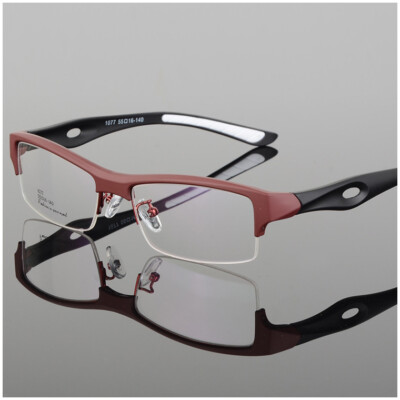
While the superior protection and clarity of polycarbonate lenses are undeniable, their full potential in athletic performance and daily wear is unlocked through optimal fit and customized vision solutions. Eyewear ergonomics and prescription integration are critical factors ensuring that polycarbonate eyewear performs flawlessly, providing not just safety but also unparalleled comfort and visual acuity. In 2025, advancements in frame technology and lens customization make it easier than ever to tailor polycarbonate glasses to individual needs.
Frame Technology and Ergonomics
The performance of polycarbonate lenses is significantly enhanced by the frame they’re housed in. A well-designed frame ensures stability, durability, and comfort, preventing distractions and maintaining the optical integrity of the lenses during activity. Understanding frame materials and ergonomic features is key to selecting eyewear that supports an active lifestyle.
Grilamid TR90 Frame: Durability and Flexibility
For sports eyewear and active lifestyle glasses, Grilamid TR90 stands out as a premier frame material. This thermoplastic polyamide is renowned for its exceptional properties, making it an ideal companion for polycarbonate lenses. TR90 frames are incredibly lightweight, which reduces pressure points and enhances comfort, even during extended wear.
Beyond lightness, Grilamid TR90 boasts impressive durability and flexibility. It can bend significantly without breaking, making it resistant to impact and less prone to damage from accidental drops or vigorous activity. Its heat resistance also means the frames maintain their shape and integrity even when exposed to high temperatures, such as leaving them in a hot car. This resilient material ensures that your polycarbonate eyewear remains a robust and reliable tool for your athletic pursuits.
Anti-Slip Nose Piece and Hydrophilic Features
To ensure eyewear stability during intense physical activity, especially when sweat is a factor, anti-slip nose pieces and hydrophilic features are essential. These ergonomic design elements are meticulously engineered to keep your polycarbonate glasses securely in place, preventing distracting slips and slides.
Anti-slip nose pads, often made from soft rubber or silicone, provide a comfortable grip on the bridge of your nose. Hydrophilic materials go a step further; they actually become tackier when exposed to moisture (like sweat), significantly increasing grip and ensuring the frames stay put no matter how much you exert yourself. This secure fit is critical for maintaining uninterrupted vision and focus, allowing you to concentrate fully on your sports performance without worrying about your eyewear shifting. Many sport-specific frames also integrate hydrophilic temple tips for enhanced stability behind the ears.
Prescription Integration and Accessibility
For many, optimal vision requires corrective lenses. The good news is that polycarbonate lenses are incredibly versatile, offering excellent solutions for prescription eyewear, even for those with complex optical needs. Integrating prescription into sporting eyewear ensures everyone can benefit from the impact protection and clarity of polycarbonate.
Can You Get Prescription Polycarbonate Lenses?
Absolutely. Prescription polycarbonate lenses are widely available and highly recommended by opticians and eyewear professionals in 2025. This material is an excellent choice for Rx lenses due to its inherent advantages. Polycarbonate is significantly thinner and lighter than traditional plastic lenses, even for high prescriptions, which results in more comfortable and aesthetically pleasing eyewear.
Its impact resistance is a crucial safety benefit for prescription wearers, offering superior eye protection against unexpected impacts or falls. Furthermore, polycarbonate readily accepts various lens coatings, including anti-glare, anti-scratch, and UV protection, as well as advanced photochromatic technology. Whether you need single vision, bifocal, or progressive lenses, polycarbonate can accommodate various optical prescriptions. For individuals seeking practical and stylish vision correction that includes multiple focal points, such as those looking for glasses with readers, polycarbonate progressive lenses offer a seamless blend of close-up clarity and distance vision in one durable, lightweight package.
Custom Inserts for Specific Eyewear Technology
For athletes and outdoor enthusiasts who prefer specialized wrap-around sports glasses or goggles that may not support direct prescription lens integration, custom inserts provide an ingenious solution. These prescription adapters are small, lightweight frames that hold your prescription polycarbonate lenses and clip securely into the back of the primary eyewear.
This eyewear technology allows Rx wearers to benefit from the advanced features of high-performance sports frames, such as extreme curvature for peripheral vision or specialized ventilation systems, without compromising their vision acuity. The outer polycarbonate lens still provides the primary impact protection and UV filtering, while the Rx insert ensures clear vision. This modular approach offers incredible flexibility, allowing users to easily remove the prescription insert when sharing eyewear or if their vision needs change.
Optimizing your polycarbonate eyewear for fit and vision is about combining the inherent strengths of polycarbonate lenses with smart frame technology and prescription accessibility. To discover a comprehensive range of polycarbonate lens options, including customizable frames, Rx solutions, and advanced coatings designed to enhance your athletic performance and daily visual comfort, explore leading eyewear suppliers. Find the perfect poly carbonate lenses that match your lifestyle and provide unparalleled protection and clarity: customizable polycarbonate lenses.
Maximizing Longevity: Care and Maintenance for Polycarbonate Lenses
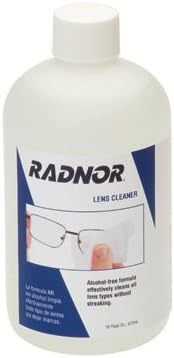
The inherent durability and impact resistance of polycarbonate lenses make them an outstanding choice for eyewear, especially for active individuals. However, even the most robust lenses require proper care and maintenance to ensure their longevity and preserve their optical clarity. Understanding the correct cleaning methods and daily habits for polycarbonate eyewear is crucial for maximizing its lifespan and maintaining peak visual performance in 2025.
The Right Way to Clean Your Lenses
Proper cleaning is fundamental to preventing scratches and maintaining the pristine condition of your polycarbonate lenses. While polycarbonate is exceptionally strong, its surface can still be susceptible to abrasion if not cleaned correctly.
How to Clean Polycarbonate Glasses Without Scratching
To effectively clean your polycarbonate glasses without scratching them, follow a gentle, systematic approach. First, always rinse your lenses under lukewarm water to remove any loose dust, dirt, or debris. This crucial step prevents these particles from being dragged across the lens surface during wiping, which is a common cause of scratches.
Once rinsed, apply a small drop of mild, lotion-free dish soap to each lens. Gently rub the lenses with your fingertips in a circular motion, ensuring all surfaces are covered. Rinse thoroughly under lukewarm water again to remove all soap residue. Finally, dry your polycarbonate lenses with a clean, soft microfiber cloth specifically designed for eyewear. Avoid using paper towels, tissues, or clothing, as their coarse fibers can scratch the delicate lens coatings.
Recommended Cleaning Products for Polycarbonate Lenses
For optimal care of your polycarbonate lenses, using the right cleaning products is as important as the technique. Beyond mild dish soap and lukewarm water, specialized lens cleaning sprays are highly recommended. These sprays are formulated to be safe for anti-reflective, anti-scratch, and UV protection coatings commonly found on polycarbonate eyewear. Look for pH-neutral solutions that are free from ammonia, alcohol, or harsh chemicals, as these can degrade lens coatings over time. Many opticians also recommend distilled water as a pure, residue-free option for rinsing. Investing in a dedicated microfiber cloth ensures a lint-free and scratch-free drying process, preserving the visual acuity of your lenses. For a wide selection of polycarbonate lenses and compatible cleaning accessories designed for maximum longevity and clarity, consider exploring options that offer comprehensive eyewear solutions to support your care routine: polycarbonate lens cleaning accessories.
Common Pitfalls and What to Avoid
Even with the best cleaning practices, certain habits can inadvertently shorten the lifespan of your polycarbonate lenses. Awareness of these common pitfalls is key to protecting your investment.
Protecting Your Scratch Resistant Lenses
It’s vital to understand that polycarbonate lenses are scratch resistant, not scratch proof. While they come equipped with a durable hard coating that significantly enhances their abrasion resistance, excessive force or improper handling can still lead to damage. One major pitfall is placing your glasses face down on any surface, as this directly exposes the lenses to potential scratches. Always place them folded with the lenses facing upwards or, ideally, store them in a protective eyewear case. Avoid leaving your eyewear loose in a bag or pocket where keys, coins, or other abrasive items can rub against the lenses. Regular maintenance, including a quick rinse, can significantly reduce the risk of micro-scratches that accumulate over time. For those with polarized polycarbonate lenses, the same care applies to protect the polarizing filter and outer coatings. Understanding the science behind polarized light and its benefits can further enhance your appreciation for these advanced lenses and their care requirements: polarized.
Daily Habits for Extending Eyewear Lifespan
Cultivating a few simple daily habits can dramatically extend the lifespan of your polycarbonate eyewear. Always use both hands to put on and take off your glasses to prevent bending or stressing the frame and lenses. Never push your glasses up onto your head, as this can stretch the frame and loosen the fit, potentially leading to the lenses falling out or getting misaligned. Avoid exposing your polycarbonate lenses to extreme heat, such as leaving them on the dashboard of a hot car or near open flames. While Grilamid TR90 frames boast heat resistance, prolonged exposure can still warp frames or damage lens coatings. Consistent, gentle cleaning and proper storage in a sturdy case are the most effective daily habits to ensure your polycarbonate lenses continue to offer unparalleled clarity, protection, and durability for years to come.
Optimizing the longevity of your polycarbonate lenses is about proactive care and understanding their unique properties. By adhering to proper cleaning techniques, using recommended products, and adopting conscientious daily habits, you can preserve the impact resistance and optical clarity that make polycarbonate the superior choice for eyewear. To discover a comprehensive selection of poly carbonate lenses designed for durability and performance, explore options that cater to both prescription and non-prescription needs, ensuring your eyewear stands the test of time: premium poly carbonate lenses.
Upgrading Your Vision: Replacing Polycarbonate Lenses
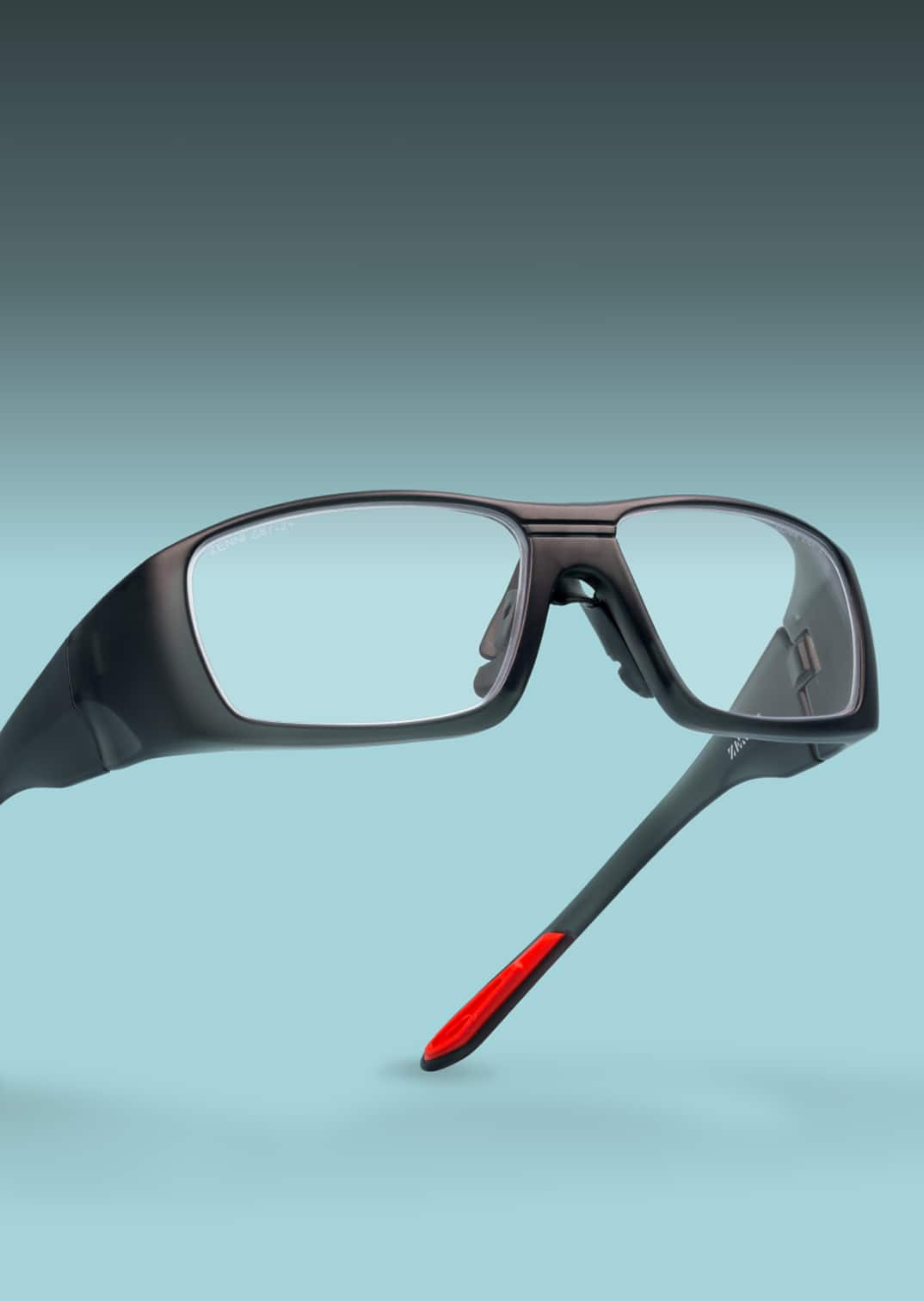
Even with meticulous care and attention, there comes a time when polycarbonate lenses may need replacement. Whether due to natural wear and tear, accidental damage, or a change in your prescription, understanding when and how to upgrade your eyewear is crucial for maintaining optimal vision and performance. This section will guide you through the considerations for lens replacement, particularly focusing on the durability and unique properties of polycarbonate material.
When to Consider Lens Replacement
Knowing when your existing polycarbonate lenses have reached the end of their optimal lifespan is key to ensuring continuous clear vision and eye protection. It’s not just about aesthetics; impaired lenses can lead to eye strain and reduced visual acuity.
Addressing Scratches, Damage, or Prescription Changes
The most common triggers for lens replacement are accumulated scratches, significant damage, or an updated prescription. While polycarbonate lenses are renowned for their impact resistance and typically come with a robust anti-scratch coating, daily use can still lead to minor abrasions over time. These scratches, even if seemingly small, can diffuse light, reduce optical clarity, and make vision blurry, especially at night. Similarly, accidental damage such as chips or cracks, despite polycarbonate‘s shatter-resistant properties, necessitates immediate replacement to restore structural integrity and visual performance.
Perhaps the most frequent reason for upgrading lenses is a change in prescription. Our eyesight naturally evolves, and an outdated prescription can cause headaches, eye fatigue, and simply inadequate vision correction. Regular eye exams are essential to detect these shifts and ensure your eyewear continues to support your visual needs effectively in 2025.
Evaluating Your Current Eyewear (Lens Care & Replacement)
Before deciding on lens replacement, it’s wise to evaluate the overall condition of your current eyewear. You might have diligently followed all lens care guidelines, cleaning your polycarbonate lenses daily with recommended products and storing them properly, yet wear is inevitable. Assess the integrity of your anti-reflective and UV protection coatings; sometimes these coatings can degrade or peel, impacting optical clarity even if the lens material itself is fine.
Also, consider the frame condition. Is it still in good shape, or is it bent, broken, or simply out of style? Often, the frame is perfectly fine, making lens replacement a more economical and sustainable choice than purchasing an entirely new pair of glasses. Polycarbonate‘s lightweight nature and excellent optical properties make it an ideal material for new lenses fitted into existing frames, especially for active lifestyles or for children who require durable eyewear.
Navigating Online Lens Replacement Services
The digital age has revolutionized how we access eyewear, making online lens replacement services an increasingly popular and convenient option. However, successfully utilizing these services requires careful consideration and attention to detail.
Key Factors for a Smooth Online Experience
Opting for online lens replacement offers unparalleled convenience, often at a competitive price. To ensure a smooth process for your polycarbonate lenses, several key factors demand your attention. Foremost is the accuracy of your prescription. Unlike in-person optical shops, online services rely entirely on the prescription data you provide. This includes spherical power (SPH), cylinder (CYL), axis, and crucially, your Pupillary Distance (PD). A precise and up-to-date prescription is non-negotiable for achieving optimal visual correction from your new lenses. For guidance on obtaining or verifying your prescription for online use, including understanding what goes into an online eye prescription, consulting a comprehensive guide can be incredibly beneficial.
Furthermore, research the online retailer thoroughly. Look for reputable companies with positive customer reviews, clear communication channels, and transparent return policies. Verify that they specifically offer polycarbonate lenses and the full range of coatings you desire, such as anti-scratch, anti-glare (AR coating), and UV protection. Some online services require you to mail in your existing frame, so ensure you understand their shipping and handling procedures. Prioritizing accuracy and reliability in your chosen online lens replacement provider will ensure your polycarbonate eyewear performs exactly as expected.
Duplicating Existing Lenses vs. New Prescriptions
When approaching online lens replacement, you typically have two main paths: duplicating existing lenses or ordering lenses based on a new prescription. Each method serves different needs for your polycarbonate eyewear. If your current lenses are damaged but your vision hasn’t changed, some online services can measure the prescription directly from your old lenses (provided they are relatively intact). This “lens duplication” service is convenient as it bypasses the need for a recent eye exam, ideal for replacing scratched or minorly damaged polycarbonate lenses where the prescription is stable.
Conversely, if your eyesight has changed, a new prescription is essential. You’ll need to visit an optometrist for a comprehensive eye exam in 2025. With your updated prescription in hand, online services can precisely cut and fit polycarbonate lenses that perfectly match your new visual requirements. This method ensures your eyewear provides accurate and comfortable vision correction. Regardless of the path, double-checking all prescription details, especially your PD, is paramount for both lens duplication and new prescriptions to guarantee the optical clarity and visual comfort of your polycarbonate lenses.
For a wide array of poly carbonate lenses suitable for replacement or new eyewear needs, offering advanced optical clarity and impact resistance, explore options that prioritize both performance and value: replacement poly carbonate lenses.
Embracing the Future: The Unrivaled Advantages of Polycarbonate Lenses
Throughout this guide, we’ve explored why poly carbonate lenses stand as a premier choice in modern eyewear. Their inherent strength provides an “unmatched level of eye protection,” making them virtually shatterproof and indispensable for active lifestyles, sports enthusiasts, and children. This superior impact resistance, coupled with their innate ability to block “100% of harmful UVA/UVB rays,” ensures comprehensive long-term eye health, acting as your personal UV shield. Beyond safety, the remarkable “lightweight comfort” of polycarbonate significantly enhances wearability for all-day use, preventing common discomforts associated with heavier lens materials. While slightly thicker than some high-index alternatives for extreme prescriptions, their excellent optical clarity, especially with advanced aspheric designs, still minimizes peripheral distortion, offering crisp, clear vision for the majority of users. We’ve also delved into how these advanced lenses integrate seamlessly with modern frame technologies like “Grilamid TR90,” offering robust and flexible eyewear solutions with “anti-slip features” for optimal fit and stability. For those requiring vision correction, prescription polycarbonate lenses are readily available and highly recommended, even accommodating complex needs through “custom inserts” for specialized sports eyewear. To maximize the “longevity” of your investment, proper care is paramount. Gentle cleaning with appropriate products and adopting diligent daily habits, such as avoiding extreme heat and always using a protective case, will safeguard the “scratch-resistant coating” and preserve the impeccable clarity of your lenses for years. Should wear or prescription changes necessitate an upgrade, convenient “online lens replacement services” offer a streamlined path to renewed visual acuity. In essence, choosing poly carbonate lenses represents a smart investment in durability, safety, and comfort. Whether you’re seeking reliable everyday glasses, high-performance sports eyewear, or simply prioritizing comprehensive eye protection, polycarbonate delivers. Elevate your vision experience today by exploring a diverse selection of high-quality poly carbonate lenses, designed to meet the highest standards of safety and performance for every facet of your life.

Leave a Reply